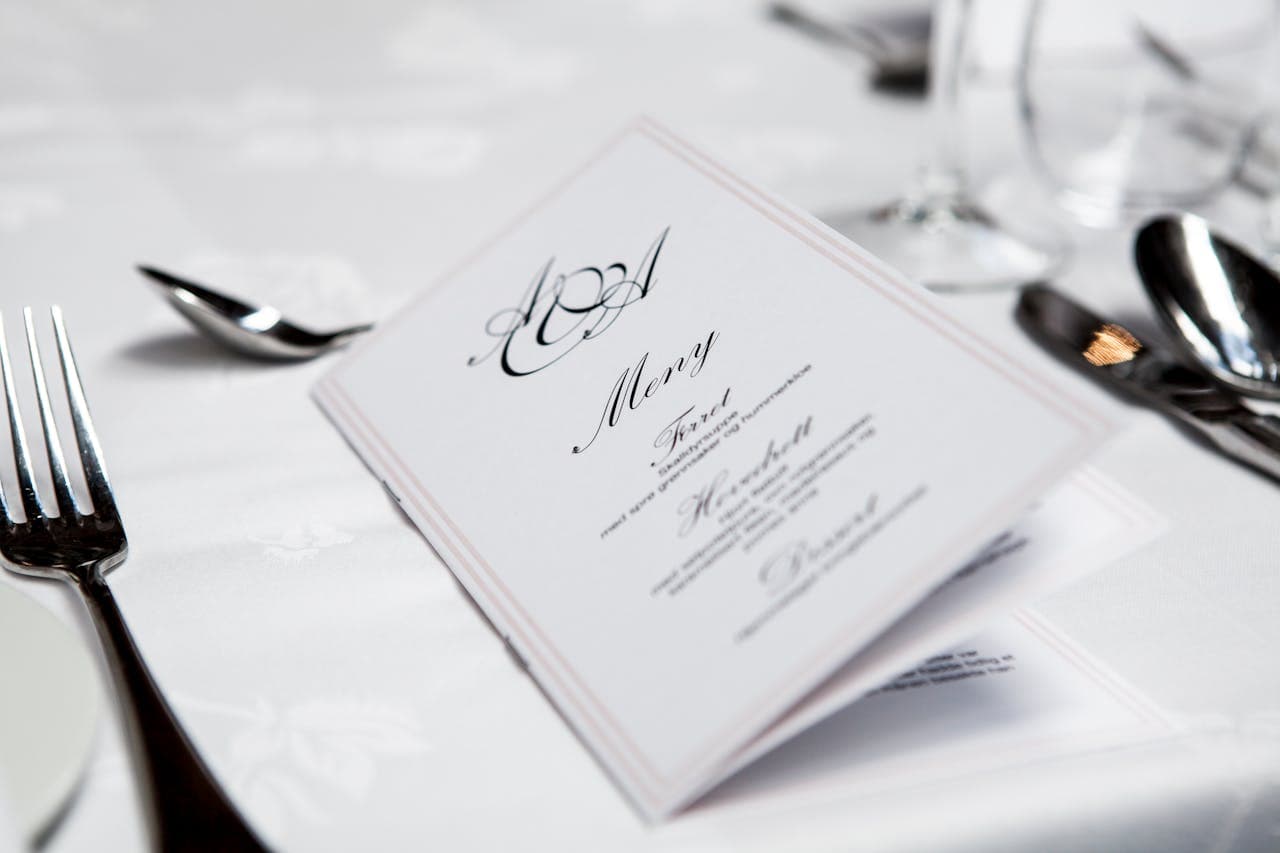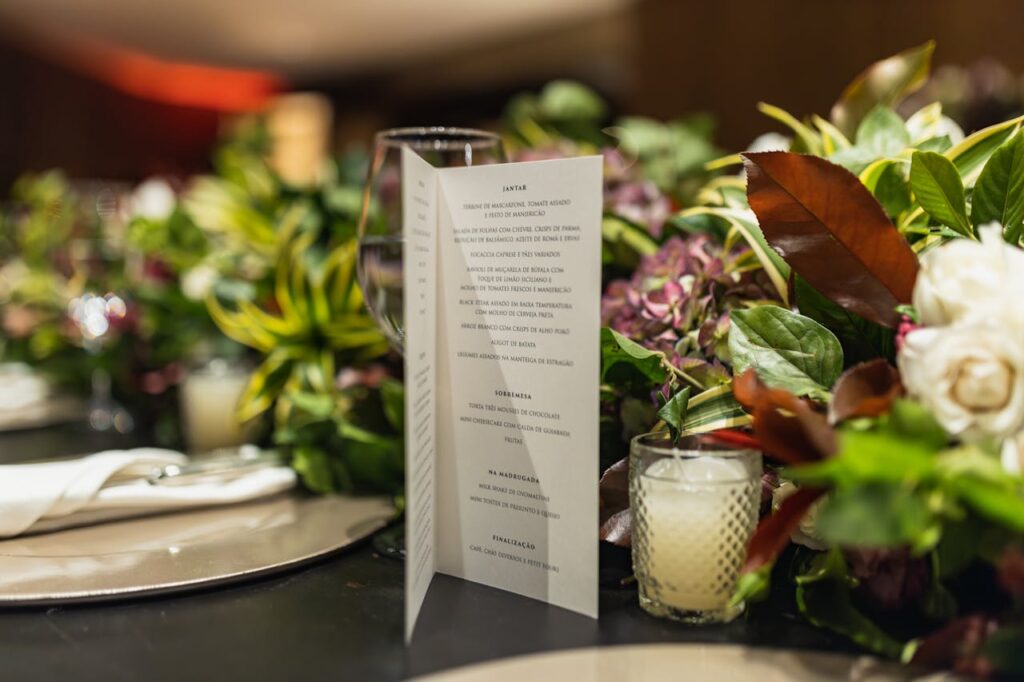
By Jermaine Thomas May 20, 2025
Developing the ideal menu design has always been a combination of art and science in the food service industry. While business owners concentrate on cost, efficiency, and market trends, chefs tend to be more creative. However, one element that connects everything and is frequently disregarded is the customer’s voice. It is no longer optional to use guest feedback catering strategies to shape your menu in the modern dining environment. It is necessary.
More than ever, consumers are actively involved with the brands they select. They share their experiences online, read reviews, and are prepared to voice their opinions when prompted. A Feedback-Driven Menu that not only pleases but also encourages loyalty and return business can be created by using these insights to guide your menu planning.
Why Guest Feedback Is a Menu Goldmine
Feedback is often seen as a way to solve problems after they occur. Someone didn’t like a dish, and they tell you so. But beyond complaints, there is a treasure trove of information that can guide your menu development long before the next service begins.
Guest feedback catering approaches help chefs and managers understand what is working and what is not. This includes everything from taste preferences and portion sizes to dietary restrictions and presentation. The more you know about what your guests value, the easier it is to build a customer-focused menu that matches their expectations.
The modern diner wants to be heard. They are interested in how their input shapes their experience. Asking for feedback and acting on it shows respect, attentiveness, and professionalism. It also improves your chances of staying ahead of food trends and avoiding costly missteps in product development.
Restaurants that rely solely on sales data may miss the bigger picture. A dish may sell well because it’s the only gluten-free option, not because it’s exceptional. Similarly, a favorite item may be underperforming due to bad placement on the menu or confusing naming. Real feedback fills in these gaps and gives context that numbers alone cannot provide.

How to Gather Meaningful Menu Feedback
The process of gathering menu survey insights does not have to be complex or expensive. What matters most is being consistent and clear in your approach. Start by identifying what you want to learn and how you plan to use that information.
Basic techniques such as online surveys, follow-up emails, comment cards, and in-person discussions can yield insightful information. Gathering structured data and conducting long-term analysis is now simpler than ever thanks to digital tools. Short surveys that take less than a minute to complete can be accessed by guests via QR codes on table tents or receipts.
Ask targeted questions to ensure the feedback is helpful. For instance, ask “What dish stood out most and why?” or “Were there any ingredients or flavours you would have preferred less or more of?” rather than “Did you enjoy your meal?”
You can also find emotional reactions by encouraging open-ended responses. People may say that a dish lacked balance or that it brought back memories of home. These responses go beyond rating scales and provide rich material for chefs to reflect on.
Incentivizing participation can improve response rates. A free dessert on a future visit, a discount code, or entry into a giveaway are all small gestures that generate goodwill and make guests more likely to share their thoughts.
Using Feedback to Identify Signature Dishes
Every restaurant or catering business wants a standout item that becomes its signature. Sometimes this happens organically, but more often it is the result of careful observation and refinement. Guest feedback catering data can reveal which items have emotional impact or strong appeal.
Pay attention to repeated mentions of the same dish, especially when the comments are enthusiastic. If multiple guests rave about your roasted cauliflower tacos or your chocolate lava cake, that’s a signal to feature it more prominently. You might also explore variations or pairings to extend its appeal.
At the same time, some dishes may show up frequently in complaints or low ratings. If a menu item consistently underwhelms guests, it may need to be reformulated or removed altogether. Eliminating weaker items opens space for more crowd-pleasing options and reduces inventory complexity.
Feedback can also highlight emerging trends. If many guests are requesting dairy-free or plant-based alternatives, consider creating a new line of options. A customer-focused menu evolves in response to guest needs, not just industry fads.
Segmenting Feedback by Audience Type
Not all guests are the same. A corporate catering client, a wedding party, and a casual lunch diner may have very different expectations and dietary needs. That is why segmenting your feedback is critical for actionable menu survey insights.
Tag answers according to the kind of event or clientele whenever you can. Responses from business lunches, for instance, might emphasise cleanliness and speed, whereas wedding clients might emphasise personalisation and visual presentation. You can adapt your products for various markets without compromising quality by knowing what each audience values most.
Preferences may vary by daypart or service type even within restaurants. While dinner guests are looking for rich, indulgent entrees, brunch customers might prefer lighter, shareable options. You can better understand what works where by breaking down feedback by time of day or ordering method (delivery, takeaway, or dine-in).
You can use feedback tools or basic analytics to sort responses by average ticket size, frequency of visits, or demographics. These insights help you decide which menu items to feature, promote, or retire depending on the audience being served.
Incorporating Feedback into the Menu Creation Process
It’s one thing to collect feedback and another to use it meaningfully. Integrating guest feedback catering data into your creative process involves collaboration between chefs, managers, and marketing teams. Start by reviewing your most recent feedback and identifying common themes. Are there frequent mentions of overly salty food, too few vegetarian options, or poor dessert variety? Turn these comments into discussion points during menu planning sessions.
Chefs may initially resist input that challenges their culinary instincts. That’s why it helps to frame feedback as an opportunity, not a criticism. If guests say a sauce is too spicy or a dish is too rich, it’s not an insult; it’s a clue about how to reach more people.
Testing new dishes based on guest suggestions is a great way to build loyalty and excitement. A limited-time offer inspired by real feedback can generate buzz and allow you to validate demand before making it permanent. Highlighting guest-inspired dishes on social media or printed menus also builds a sense of community.
Adjusting portion sizes, plating, or pricing based on menu survey insights can have an immediate impact on satisfaction. When guests feel their voices are being heard, they are more likely to return and share their positive experiences with others.
Balancing Guest Feedback with Operational Realities
Not all of the ideas will work or be profitable. Visitors may ask for unusual ingredients, customised versions of each dish, or time-consuming plating methods. Listening is vital, but it’s just as crucial to filter feedback using an operational lens. Utilise catering data from guest feedback to find high-impact adjustments that fit your business plan. For instance, adding a gluten-free dessert to the menu could be low effort and high reward if several guests request it and your kitchen has the ingredients on hand.
However, a suggestion might not be feasible if it would result in sourcing difficulties, staffing problems, or a significant slowdown in service. It’s helpful to be open about your limitations when rejecting ideas. A note on your website or menu explaining your commitment to balance and efficiency shows that you care about feedback, even if you cannot accommodate every request.
As you refine your customer-focused menu, involve your team in the decision-making process. Servers, kitchen staff, and hosts often have direct insight into what guests like and dislike. Creating a feedback culture internally ensures that decisions are well-rounded and grounded in everyday reality.
Leveraging Technology for Smarter Feedback Loops
Modern hospitality businesses have access to more tools than ever to track and interpret menu survey insights. Point-of-sale systems, loyalty programs, reservation platforms, and review aggregators all provide data that can inform menu design. Some platforms use artificial intelligence to flag trends, rank items by satisfaction, or suggest pricing adjustments. Integrated systems can show correlations between guest behavior and specific dishes, such as whether a certain appetizer increases the likelihood of a repeat visit.
Online reviews and social media comments also serve as informal feedback channels. While they may not always be structured or polite, they provide raw, unfiltered impressions that reveal gaps in service or surprises in performance.
Smart businesses use a combination of real-time surveys, historical data, and digital monitoring to create a comprehensive feedback loop. By connecting the dots between what people say, what they order, and how often they return, you can make data-backed decisions that strengthen your customer-focused menu.

Feedback as a Competitive Advantage
Being good at listening is a competitive advantage in the crowded food service industry. Successful businesses stand out for their ability to react swiftly and efficiently to what customers want, even though menu creativity and chef skill are also crucial. A company is more flexible, relevant, and reliable if it makes updates to its offerings based on actual guest feedback. When their opinions are represented in the food served, guests feel empowered. This increases more than just transactional satisfaction; it also fosters emotional loyalty.
Having a regular conversation with your customers makes it easier to adjust to their changing tastes, health trends, or cultural shifts. You’re asking, listening, and meeting their needs; you’re not speculating.
Whether it’s a casual café adjusting to seasonal cravings or a fine dining establishment curating a tasting menu based on loyal patrons’ desires, a feedback-driven strategy enhances not only the menu but the brand as a whole.
Conclusion
Making the perfect menu is a continuous process. It is an ongoing process of learning, improving, and adapting. Food service operators can create a menu that appeals to customers on all levels by implementing guest feedback catering techniques and examining menu survey results.